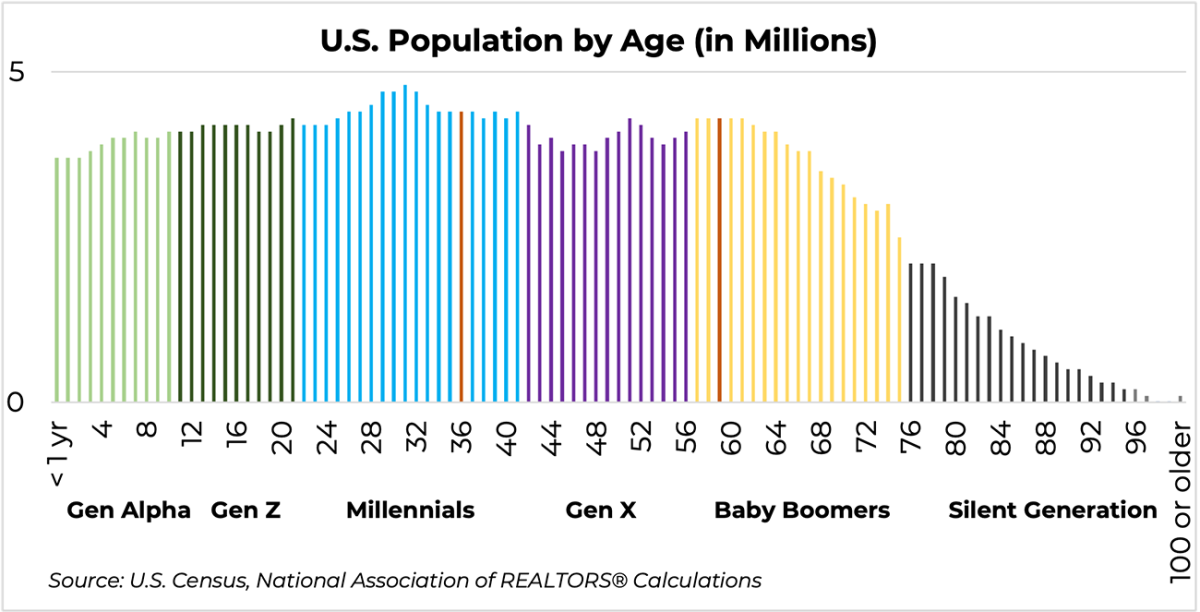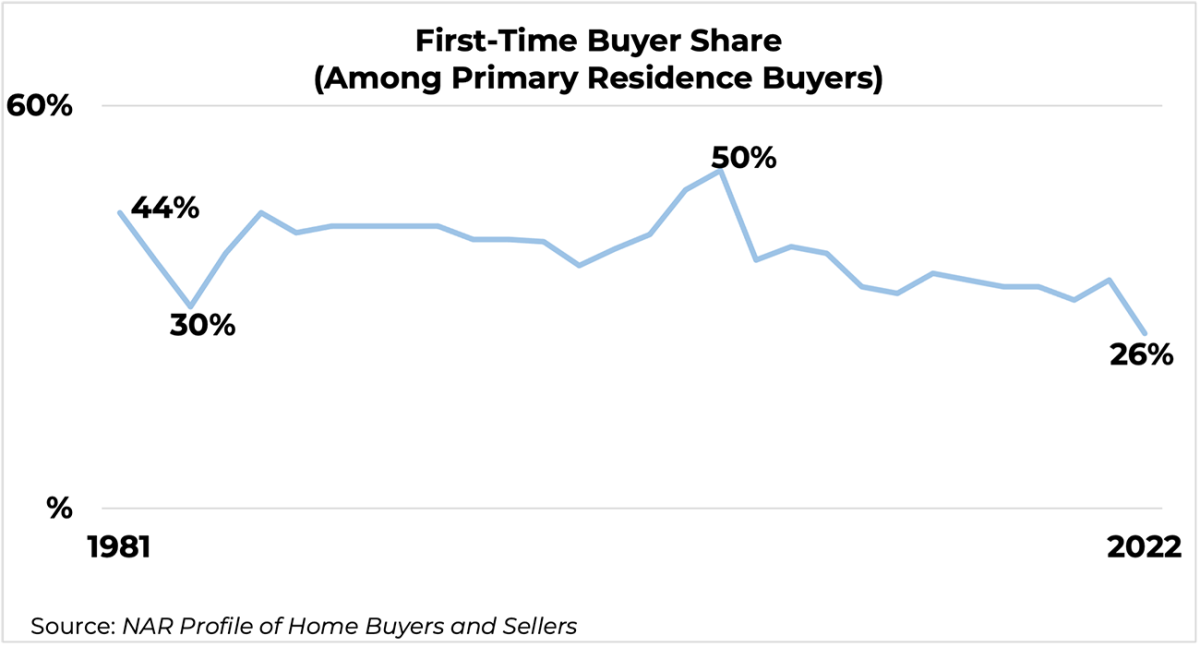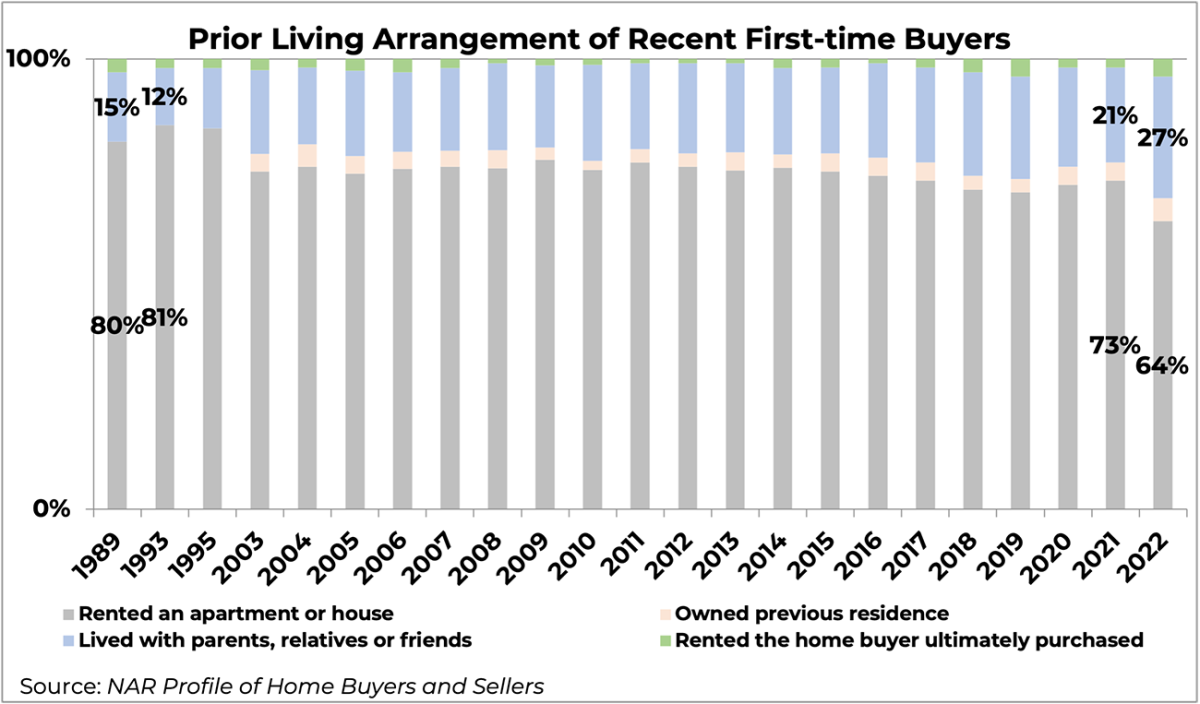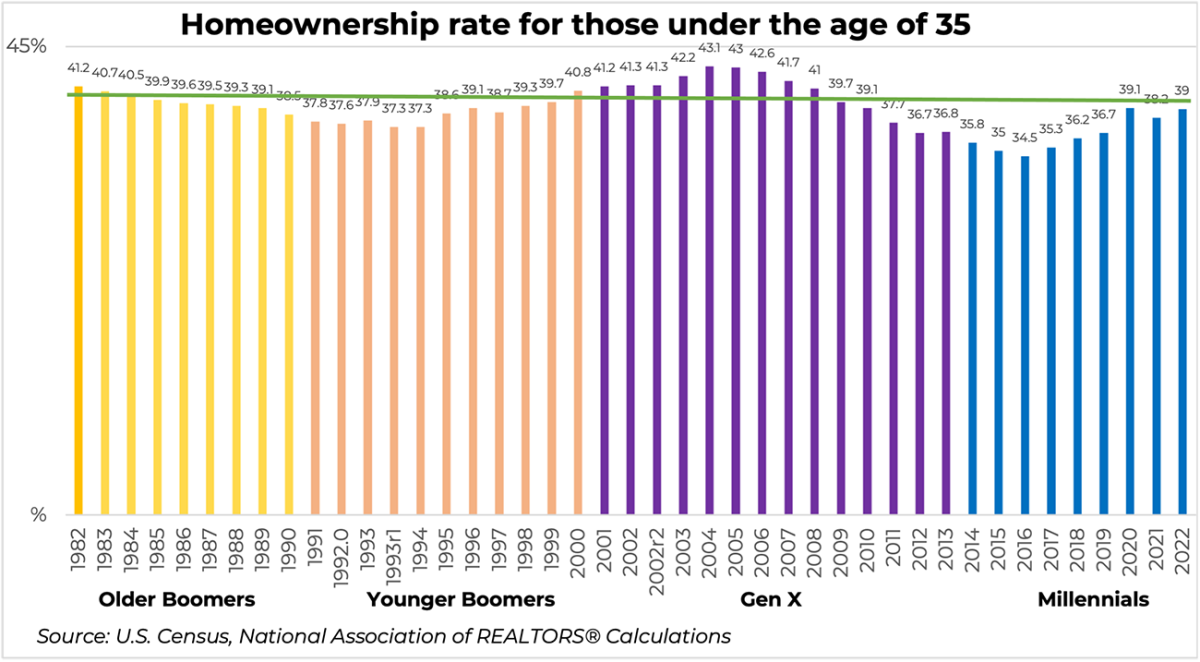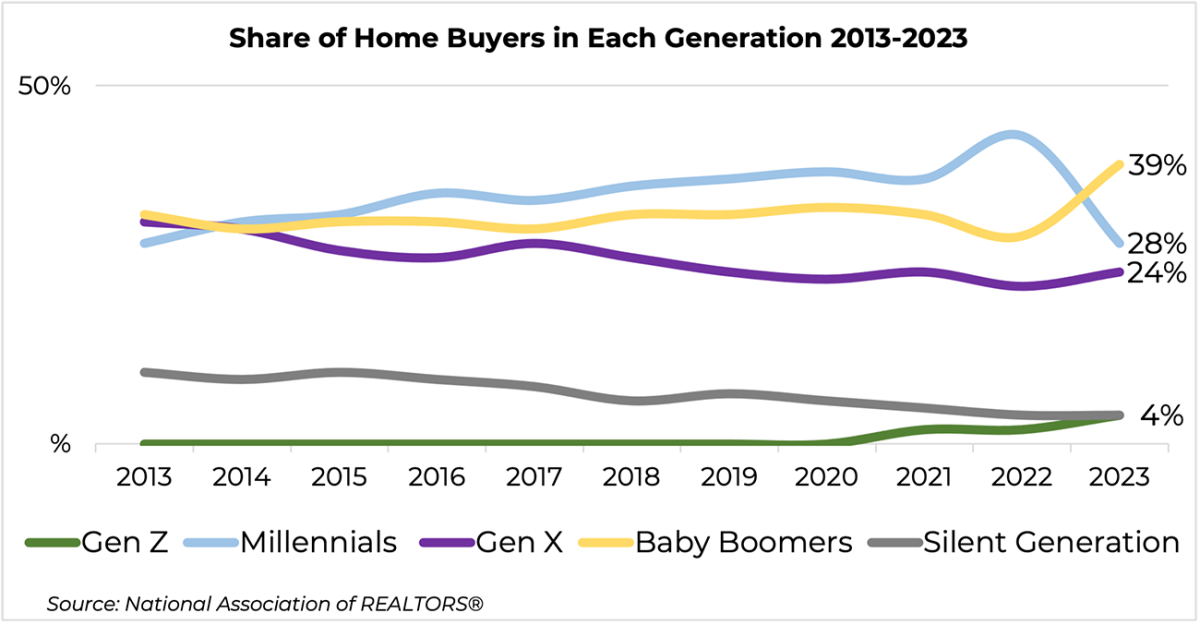At the same time the age jumped, the share of first-time buyers continues to lag at historic lows. The annual share is at 26% when the historical average was at 40% of all primary residence buyers dating to 1981.
Indeed, low housing inventory, which has averaged nearly 1 million units in the market, is a factor. Today’s higher interest rates are pricing some consumers out. In many areas of the country, home prices are rising. Areas where home prices have softened tend to be where multiple bids pushed up prices throughout the pandemic.
Even among successful first-time buyers, multiple debts keep them from saving for a down payment. Among those who said saving for a down payment was difficult, the most cited hurdles were high rent (40%), car loan (39%), credit card debt (38%), student loans (35%), and child care costs (19%). The recent softening in high rental prices will be a welcome relief to some moving forward. Twenty-seven percent of successful first-time buyers skipped rent and moved directly from a family member’s home into homeownership. This is the highest share recorded.
It is worth noting that student debt makes the top four debts at a time when student debt payments were paused for many loan holders. It is possible that even when student debt payments were paused, debt holders were reticent to take out a mortgage, knowing payments could resume. A smaller share of buyers cites childcare costs, but overall the cost has increased 220% since 1990 and is $883 per month on average for one child in 2021(link is external).
So with that bleak picture, where is the homeownership rate for those under 35? (Census provides a consistent reading of the homeownership rate by age, though this does not match directly to generations.) When looking at the Census homeownership rate data, there have been positive reports that the rate improved for those under 35. This is true. From 2021 to 2022, the homeownership rate did improve. However, if one compares the homeownership rate from 1982 to today and then separates the data by generation, it tells a less positive story. For baby boomers and Gen Xers, the average homeownership rate for those under 35 was 39.7%. There has yet to be a year that millennials have reached that number.
Which leads to the last chart. Even though millennials are the largest adult generation in the U.S., they had a shrinking share of buyers in the market last year. This is at odds with what could happen as the largest number of millennials is at an age they traditionally have entered the market or at least had household formation. This year, baby boomers overtook millennials. One clear answer to why this happened is the older generation’s ability to pay all cash for a home purchase. With 51% of older boomers and 32% of younger boomers paying all cash for their most recent purchase, boomers are the likely winner if there is a bidding war on a home.

